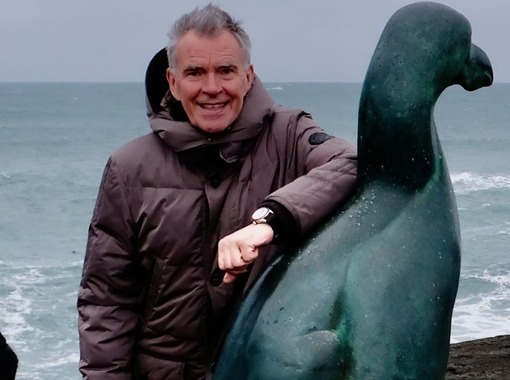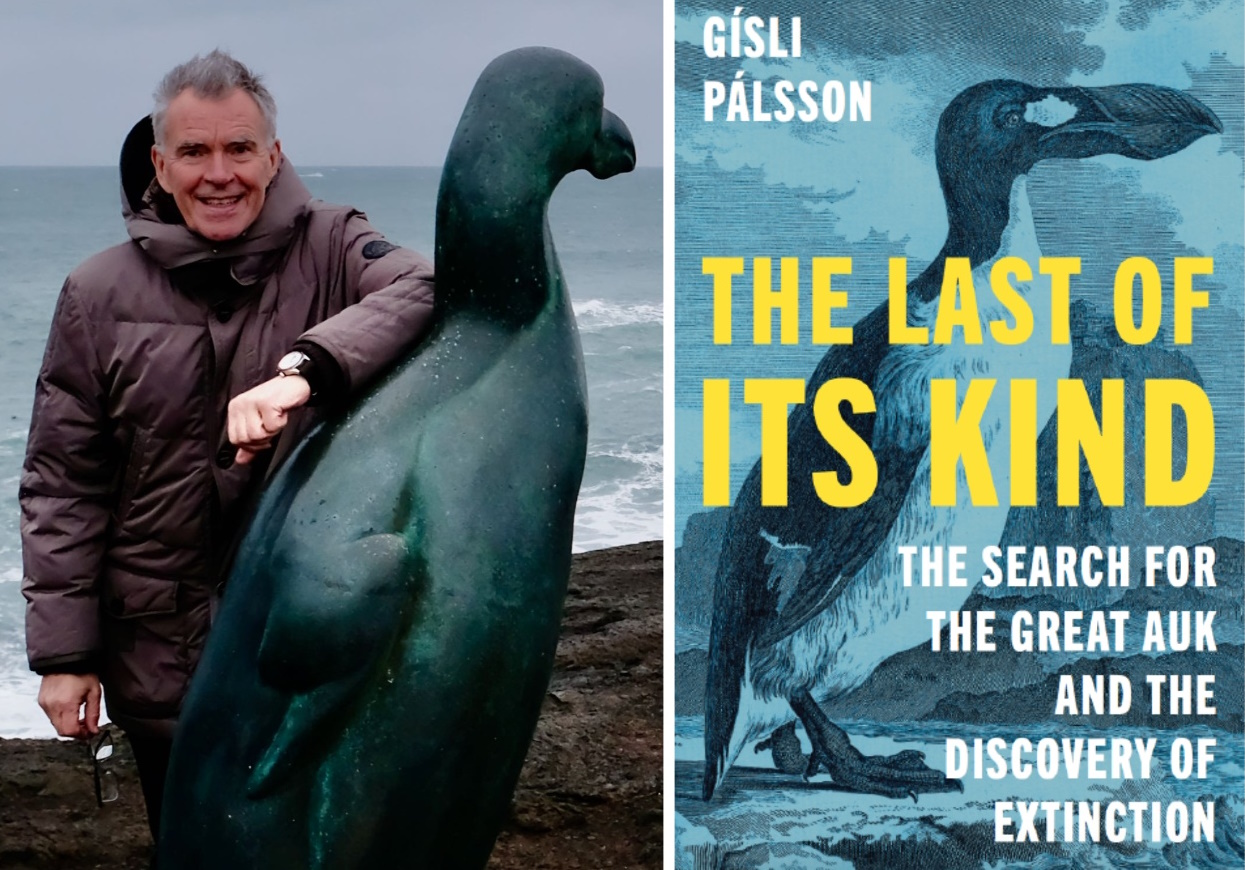The latest issue of the esteemed scientific journal Science offers glowing reviews of the English edition of Gísli Pálsson's book about the extinct great auk. Gísli is professor emeritus in anthropology at the University of Iceland. The book was recently released in the United States and since then discussions have been under way regarding its publication in other countries around the world.
Gísli's book "The Last of Its Kind", or „Fuglinn sem gat ekki flogið“ in Icelandic, was published by Forlagið in Iceland in 2020 and attracted considerable attention. The book is based on Gísli's extensive research on data and documents on the fate of the great auk, including the so-called Gare-Fowl Books, currently found in the Cambridge University library. They contain accounts from two British naturalists, John Wolley and Alfred Newton, who sailed to Iceland in 1858 on a quest for this elusive bird. However, they found no birds, as it is believed that the last two great auks of the species were killed about 180 years ago, in the summer of 1844, on Eldey Island.
During their expedition, Wolley and Newton conducted extensive interviews with bird hunters in the south-western Peninsula of Iceland, Suðurnes, and their accounts can be found in the Gare-Fowl Books. This is one of the reasons these books are considered a unique source on the extinction of the species. "There are about nine hundred handwritten pages in five volumes, a kind of Great Auk Flatey Book, stored at the Cambridge University Library, and only available in one copy." No similar source exists for any other extinct species," said Gísli in an interview on the University of Iceland's website when „Fuglinn sem gat ekki flogið“ (e. "The Bird That Couldn't Fly") was released.
A more comprehensive English version
The English version of the book; „The Last of Its Kind: The Search for the Great Auk and the Discovery of Extinction“, was published at the beginning of February by Princeton University Press in the United States. (https://press.princeton.edu/books/hardcover/9780691230986/the-last-of-it...). The publication can be traced back to Gísli contacting an agent in New York. "I sent her a comprehensive description of the book with samples. She then organized an online auction where several publishers showed interest. Princeton made the best offer and obtained the exclusive rights to publish the book in English," says Gísli.
When asked, he says that the English edition is quite different from the Icelandic one. It is considerably longer and designed for the international market. "Some of the Icelandic content was removed, but more coverage of the Cambridge manuscripts, written in Iceland, and their significance for the discovery of extinctions by humans, was added. I conducted further research to better support the conclusion that the expedition and work of naturalist Alfred Newton marked a turning point in the discourse on conservation and extinction," says Gísli.
Furthermore, he mentions that the narrative style in the book has been changed significantly. "The author is given more space in the story, and general reflections, including those on expeditions, natural history, extinction, and the concept of species, are woven in between chapters and sections about the great auk, the British ornithologists' expedition of 1858, and the people who participated, directly or indirectly," says Gísli, adding that Anna Yates translated the original text into English and Nancy Marie Brown provided substantive, “developmental” editing in the final stages.
The book is based on Gísli's extensive research on data and documents on the fate of the great auk, including the so-called Gare-Fowl Books, currently found in the Cambridge University library. They contain accounts from two British naturalists, John Wolley and Alfred Newton, who sailed to Iceland in 1858 on a quest for this elusive bird.

Enchanting, important, and timely work
The great auk has for long time been a symbol for endangered species, and the impact that humans can have on biodiversity with their exploitation. It is thus no wonder that a book about this remarkable bird attracts attention beyond national borders. The discussion of the book in the latest issue of the prestigious journal Science, recapitulates the content and the significance of the great auk's extinction for general ideas on bird and animal conservation. "The Last of Its Kind is a fascinating, important, and timely book about a major icon of extinction," says the author of the article (historian of science Mark V. Barrow Jr.).” "Although the rapid demise of the passenger pigeon and the nearly simultaneous narrow escape of the American bison would soon overshadow its disappearance, Pálsson reminds readers that the passing of the great auk represents a historic milestone in the discovery and problematization of human-caused wildlife loss," he adds. In addition to this, it can be noted that several articles have recently appeared on American websites about Gísli's book.
Negotiations for publication in Japan and China under way
"The Last of Its Kind" is expected to be available in the Student Book Store, and it will be released in the UK in early April. Then Gísli plans to follow through, with lectures later in the year in the United States, the UK, and Denmark.
Gísli's previous books have also attracted significant attention and have been translated into other languages. These include the book "Hans Jónatan: Maðurinn sem stal sjálfum sér “, e. "The Man Who Stole Himself: The Slave Odyssey of Hans Jonathan" (University of Chicago Press, 2016) a little-known story of a free black man who lived and raised a family in early nineteenth-century Iceland, and has been published in Danish, French, and English. When asked if "The Last of Its Kind" will be published in more languages, Gísli says that negotiations have already been concluded for the publication of the book with two international publishers, in Japan and China.




